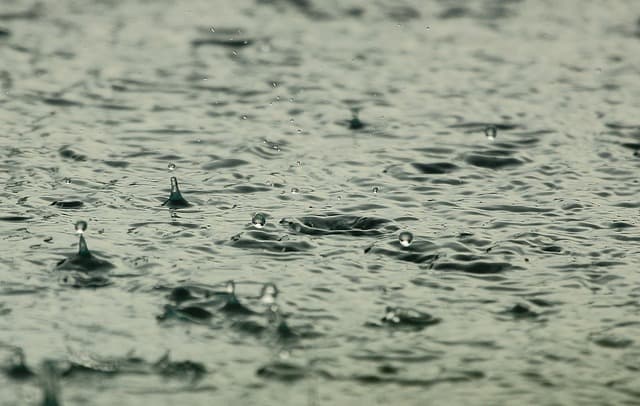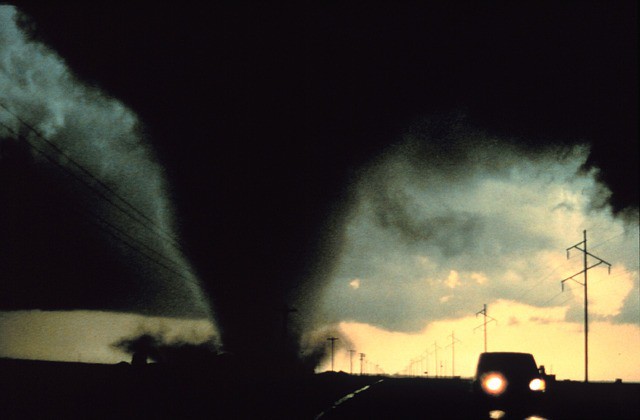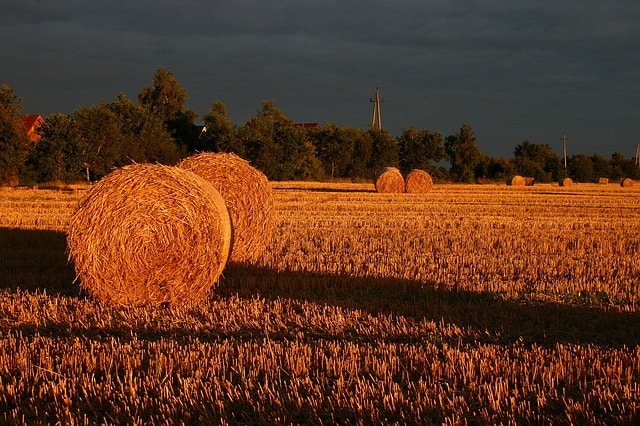How Can Rainfall Be Measured and 3 Main Types of Rainfall

First and foremost, rain is a form of precipitation that involves a downpour of condensed, super-cooled vapor as droplets of liquid water under the influence of gravity. Each droplet of water is usually greater than 0.02 inches (0.5mm) in diameter. Raindrops range in size up to about 0.13 inches (about 3mm) and the rate of fall increases up to 25feet (25m) per second. Larger raindrops tend to be flattened and broken into smaller raindrops as they fall rapidly through the air.
However, the precipitation of smaller raindrops, referred to as ‘drizzle’ impairs visibility, but does not produce significant accumulation of water. The downpour of the condensed, expanded air as droplets of liquid water could be heavy (more than 7.50mm or 0.30in per hour), light (not more than 2.5 mm or 0.01in per hour) or moderate (between the limits state for heavy and light rainfall) depending on the density of the condensed air and the type of rainfall (convectional, relief / orographic, frontal / cyclonic).
Rainfall is a measure of the total amount of water that falls as rain, in a given area, over a period of time. The American Heritage Science dictionary defines rainfall as “The quantity of water, usually expressed in millimeters or inches, that is precipitated in liquid form in a specified area and time interval”.
How Can Rainfall be Measured?
Rainfall is measured by meteorologists and hydrologists or interested scientists or persons through the use of a rain gauge. A rain gauge is also known as, ‘pluviometer’, ‘udometer’ or an ‘ombrometer’. The rain gauge is used to collect and measure the amount of liquid precipitation over a given period of time. Furthermore, a rain gauge has two important parts, necessary for the measurement of rainfall, these are:
- A collector funnel
- A mechanism to receive and measure the collected water
4 Major Types of Rain Gauges
- Weighing gauges
- Tipping buckets
- Optical gauges
- Graduated cylinder ( Also known as Standard or direct reading gauge)
Weighing Gauges
The total mass of accumulated water in this type of rain gauge is used to estimate the precipitation amount or amount of rainfall. This type of rain gauge is quite advantageous as it can measure both rainfall and solid precipitation (such as hail and snow). However, it requires more maintenance than Tipping buckets and more expensive than direct-reading rain gauges.
Tipping Buckets
This type of rain gauge is made of a collector funnel that directs rain water into two small containers. The containers are located on either sides of a horizontal plane. When the containers are filled to the required weight, they flip horizontally and discharge the rain water collected under the influence of the force of gravity. The amount of precipitation is estimated from the number of flips performed by the basket, as detected by an optical or mechanical system.
An advantage of this type of rain gauge is that, it measures both the rate of precipitation and the total rainfall; however, it becomes inaccurate when the rate of precipitation becomes too high and imprecise when the rain ends before one of the buckets is full.
Optical Gauges
This type of rain gauge has a funnel or collecting part on top of a laser diode or photo diode. The funnel directs the rain drops towards the light beam and the rate of precipitation is electronically determined by measuring the intensity of the scintillation generated.
Graduated Cylinder
This type of rain gauge is also referred to as ‘standard rain gauge’. This type of rain gauge was developed at the beginning of the twentieth century. Most graduated cylinders or standard rain gauges are calibrated in millimeters from 0.2mm to 25mm. The cylinders are about 2cm in diameter, fitted with a collection funnel that drains water into the graduated cylinder. In cases of excess rain water, a bigger container, of about 20cm in diameter receives the surplus. The total rainfall is estimated by measuring the total height of rainwater on the graduated cylinder.
To avoid water rebound or splashes from the floor or objects around a rain gauge, they must be placed at about 3 feet from the ground and at a distance of several feet away from other objects in the area of collection. Also, the cone of the funnel should be deep enough, to aid easy flow of rain water into the gauge and minimize splashes. Again, mesh filters should be used, to prevent debris like bird droppings or leaves from clogging the gauge.
3 Main Types of Rainfall
There are three major types of rainfall. They are as follows:
1) Convectional Rainfall
2) Relief / Orographic Rainfall
3) Frontal / Cyclonic Rainfall
Convectional Rainfall
This type of rainfall occurs mostly in the tropics, through a series of evaporation and condensation processes. As heat from the sun raises the temperature of the ground surface, heat released from the surface warms up the layer of air above it. This, in turn, causes the heated layer of air above the heated ground surface to expand, cool down and rise. The ground surface, being exposed to high temperatures from the radiation of the sun, continues to cause the air above it to become warm, expand, condense and rise into the atmosphere.
Furthermore, the layers of air continue to rise, expand and become cooler as they move higher in the atmosphere. This continues until a point is reached where the cooled layers of air become too dense to rise higher in the atmosphere. At this point, the layers of super-cooled and expanded air fall back onto the surface of the Earth as droplets, otherwise referred to as rain, under the influence of gravity. The droplets are usually greater than 0.02 inches in diameter.
Convectional rainfall is usually associated with the formation of cumulonimbus clouds. Also, constant high temperatures, as found in the tropics, as well as an abundant amount of moisture, to partake in the evaporation and condensation processes are necessary for this type of rainfall to occur.
Relief / Orographic Rainfall
This occurs when wind blowing over the sea encounters an obstruction, usually a highland or mountain. The orographic effect occurs when moist air flowing from the ocean encounters a mountain barrier and is forced up over the mountains. The air continues to cool as it rises, and the moisture condenses and precipitates as rain or snow on the windward side of the mountain.
When the moisture-depleted winds flow down the other side of the mountains, they warm and become drier. Little precipitation reaches the leeward side (far side) of the mountains. Therefore, there is usually little rain on the far side of the mountain. This area of little amount of rainfall is referred to as ‘rain shadow’
Frontal / Cyclonic Rainfall
This type of rainfall occurs when currents of warm air meets an opposing current of cooler parallel flowing air. The cool air being denser than the warm air forces the warm air upwards. Therefore, the warm air rises as a result of the upward thrust by the cooler air, expands, condenses and becomes denser as it travels higher in the atmosphere.
The condensed air reaches a point in the atmosphere where it becomes too dense for upward movement; therefore, it falls back as rain.
Sources:
- Blackadar, Alfred K. “Rain.” Microsoft® Encarta® 2009 [DVD]. Redmond, WA: Microsoft Corporation, 2008.
- Internet Geography Retrieved from https://geography.learnontheinternet.co.uk/topics/rain.html (on 2019, February, 12)
- Rain – Wikipedia Retrieved from https://www.en.m.wikipedia.org/wiki/Rain (on 2019, February, 12)
- Three (3) types of rainfall (2015, July 11). Retrieved from https:// geographymaterials.blogspot.com/2015/07/3-types-of-rainfall.html?m=1






